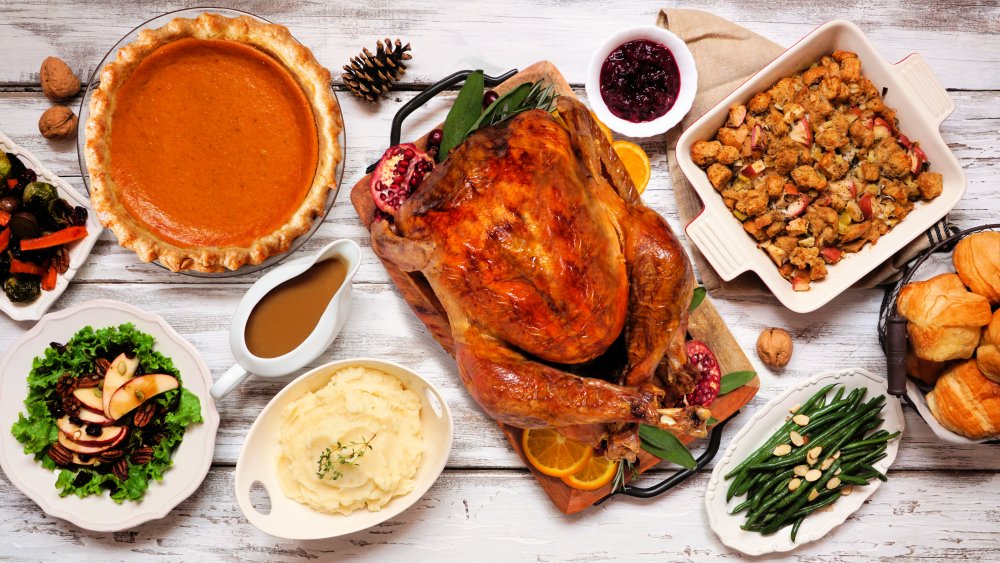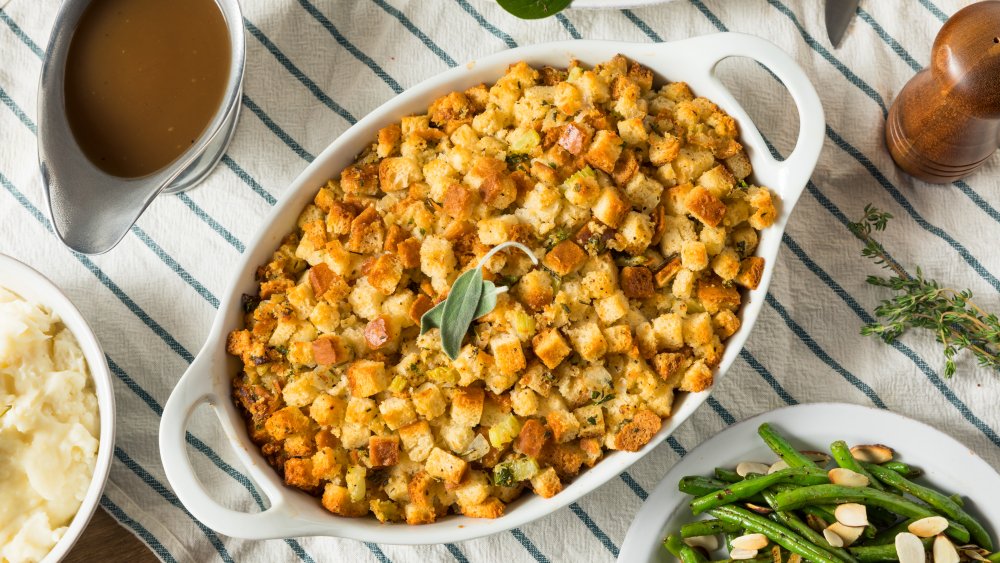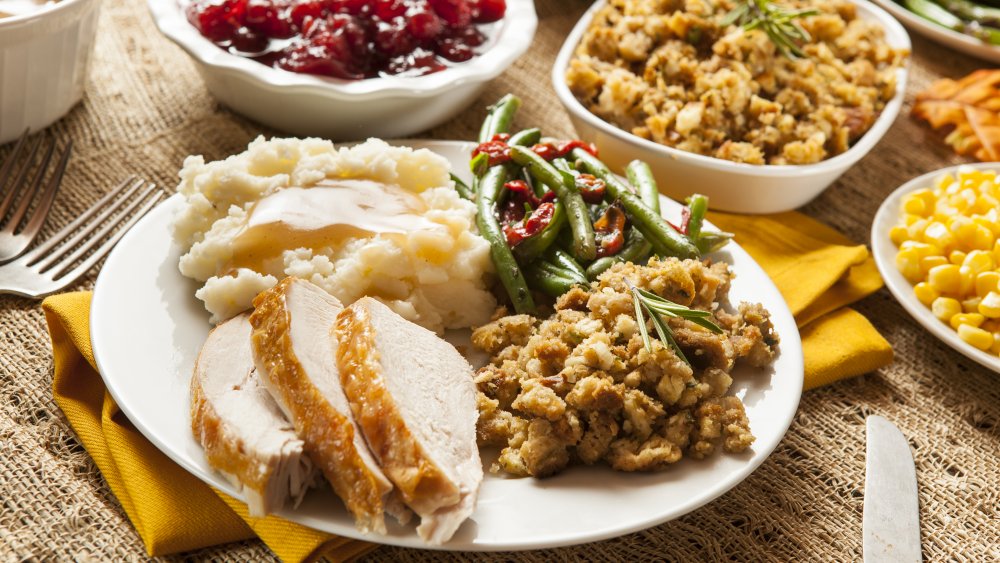How To Properly Freeze And Thaw Your Thanksgiving Stuffing
Family holidays can already be stressful times, even before you add the daunting task of having to prepare a Thanksgiving feast. These days, there are luckily so many tips and tricks out there for how to make the process as painless as possible, including make-ahead recipe options for several staples of the Thanksgiving table. That includes the stuffing, which is arguably the second star of the meal, behind the bird itself.
Stuffing can absolutely be made ahead of time, says The Daily Meal, and it can actually make things a lot easier for you on Thanksgiving day. But there are a few things to keep in mind in order to properly freeze and thaw stuffing so that it cooks evenly, and doesn't make anyone sick. And those steps vary depending on how you plan to serve your stuffing.
If you plan to actually stuff your stuffing inside the cavity of your Thanksgiving turkey, you need to take some specific steps to ensure food safety. USDA guidance says that the wet and dry ingredients for the stuffing can be prepped ahead of time, but should be stored separately and in the freezer until you're ready to stuff the turkey. Once you're ready to get cooking, thaw your stuffing components out in the fridge (if they include meat) or at room temperature. Then combine them, and immediately stuff your turkey and get it in the oven (via CDC).
Side dish stuffing is the best make-ahead option
According to Food Network, there was a time when it was practically unheard of to prepare stuffing outside of the turkey. These days, it's way more common to find recipes for stuffing that is made and served entirely separate from the Turkey. Technically, this is called dressing, but it's still the same dish, and it may be your best bet for prepping and storing your stuffing ahead of Thanksgiving Day (via Food Network).
If you plan to prepare and serve your stuffing as a side dish, the steps for making it ahead of time are a little more simple, and the risk of foodborne illness is lower (via USDA). You can combine all the ingredients and assemble your stuffing in a shallow baking dish, and then store the uncooked dish in the freezer. Once Turkey Day has arrived and you're ready to cook, you can transfer the stuffing directly from the freezer to the oven, no thawing required. The dish is ready once it reaches an internal temperature of at least 165 degrees.
Safely storing leftover stuffing
After Thanksgiving dinner, your leftover stuffing will stay good in the refrigerator for about four days, explains the USDA. If your stuffing was served inside the bird, remove it, and transfer to air-tight food storage containers. If served on the side, you can leave it in the dish, and cover it in plastic wrap and foil. You can easily reheat it on the stove, in the oven, or microwave when you're ready to dig in.
If you need to take a break from the leftover for a while, you can also freeze your extra stuffing for several months. Make sure to store it in an airtight food storage container or heavy duty freezer bag. When you're ready to reheat, there's no need to thaw first. You can use the microwave for individual portions, but the oven will give you the best results for larger servings. Blogger Foodsguy says to place the stuffing in an oven safe dish, drizzle some broth over the top if you're worried the stuffing will dry out, and cover with foil. Bake for about 15 minutes at 325 degrees, and there you have it — leftover stuffing that tastes fresh!


